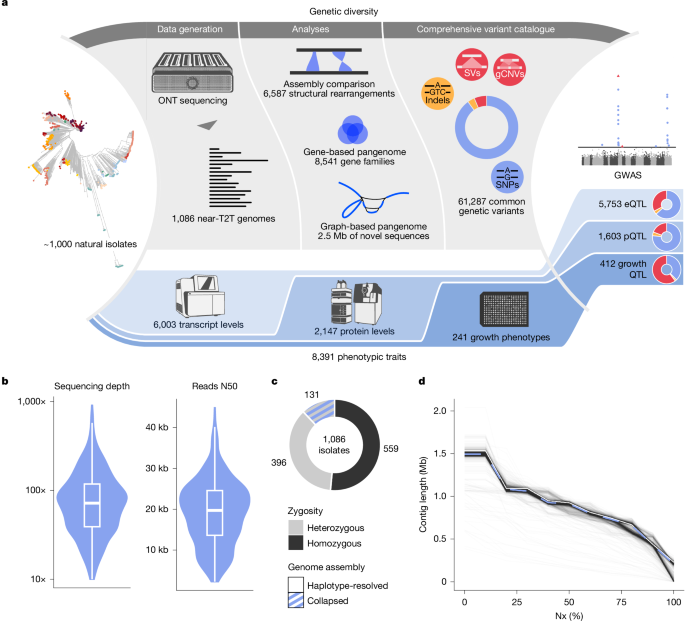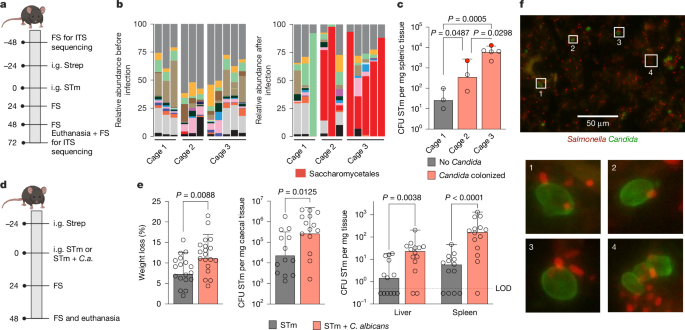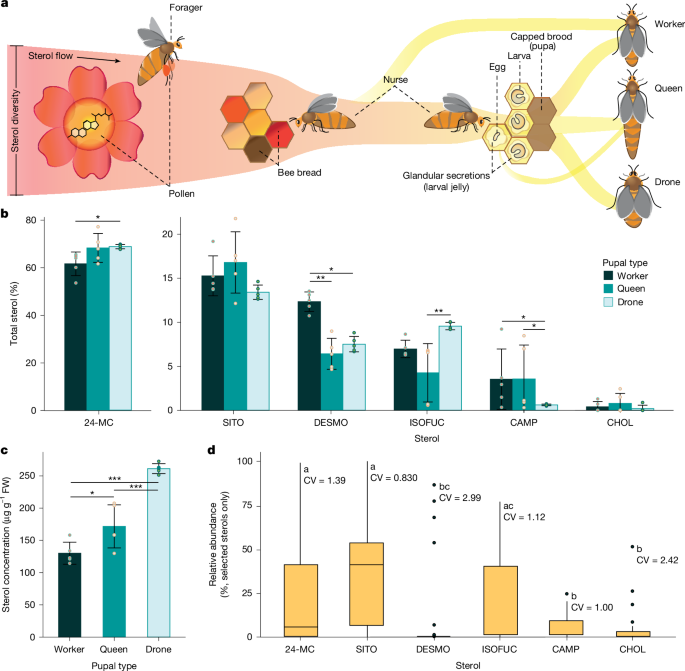Strain culture and DNA extraction We used a collection of S. cerevisiae isolates that were previously sequenced using short-read sequencing19. For each isolate, we obtained single colonies from frozen stock on solid YPD (1% yeast extract, 2% peptone, and 2% glucose) and cultured one colony per strain in 25 ml of liquid YPD at 30 °C under shaking (120 rpm). After the culture …
Read More »Tag Archives: yeast
Commensal yeast promotes Salmonella Typhimurium virulence
Bacterial and fungal culture conditions Fungal strains, bacterial strains and plasmids used in this study are listed in Supplementary Tables 14 and 15. S. Typhimurium strains were grown at 37 °C in lysogeny broth (LB) medium (per litre: 10 g tryptone, 5 g yeast extract and 10 g sodium chloride). C. albicans strains were grown at 37 °C in YPD media (per litre: 10 g yeast …
Read More »Scientists Engineer Yeast to Create Honey Bee Superfood – Colonies Grew 15-Fold
Bees feeding on a synthetic pollen substitute – credit, Caroline Wood, Oxford U news A study team from Oxford University has identified a fermentation method that creates the perfect balanced diet for honey bees who can’t get enough natural pollen. Synthetic pollen substitutes are often fed to bees as a dietary supplement to natural pollen, but until now it’s been …
Read More »Engineered yeast provides rare but essential pollen sterols for honeybees
Strains, culture conditions and chemicals Escherichia coli strain DH5α was used for plasmid construction. E. coli was grown at 37 °C and 300 r.p.m. in lysogeny broth (LB) liquid medium and at 37 °C on plates of LB solid medium supplemented with 20 g l–1 agar. Ampicillin was supplemented at a concentration of 100 mg l–1 for plasmid selection. The Y. lipolytica W29 strain (MATa, Y-63746 ARS Culture Collection, …
Read More »


